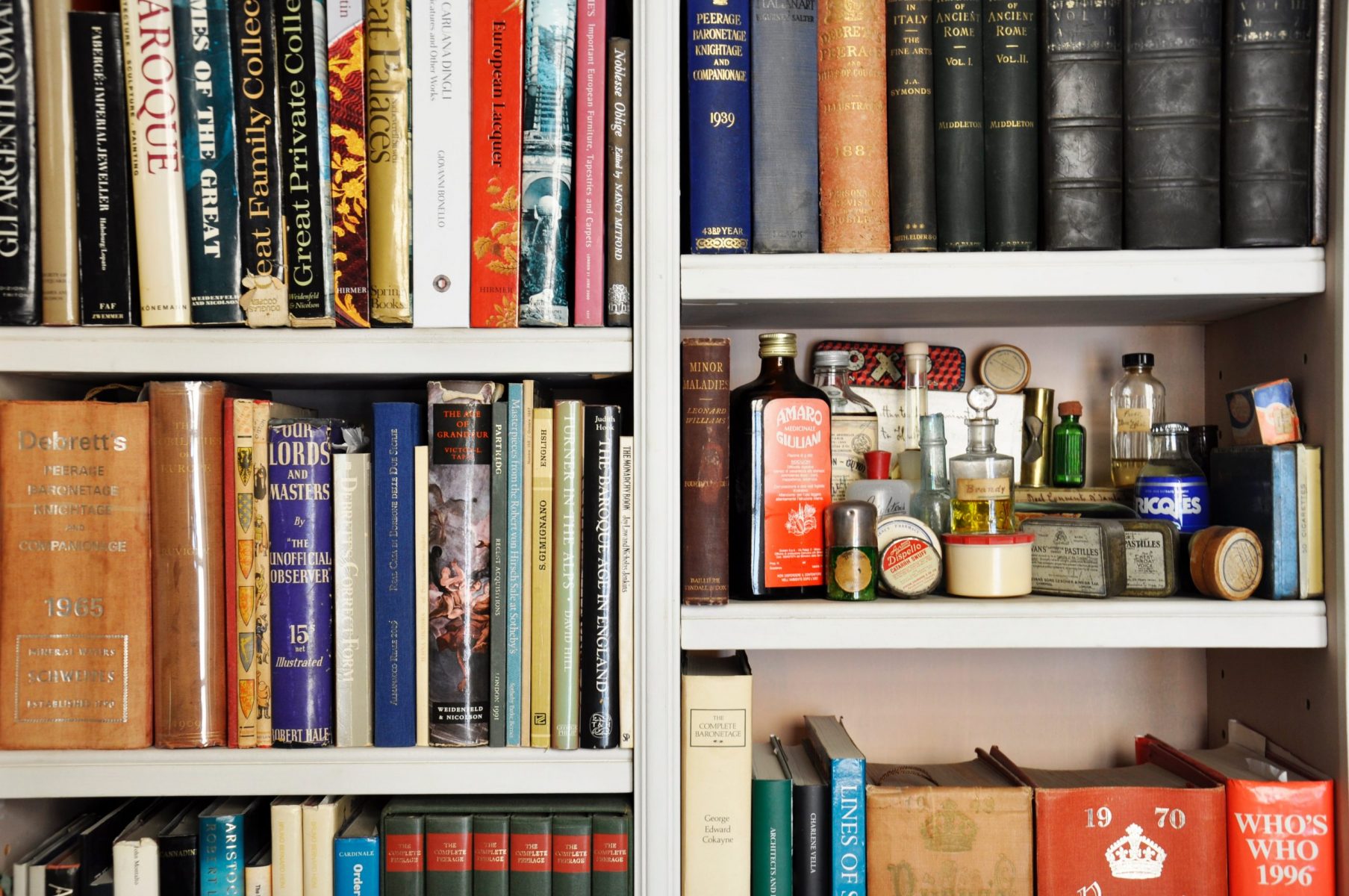Over the years, my love for literature has led to books becoming a major presence in my life and most of my bedroom. They’ve been on shelves, a dresser, under my bed, sitting on a windowsill and basically any open space that is left. I’ve constantly found myself reinventing ways to declutter my room of books, but it never lasted for long. Somehow, I end up back in bookstores and my room is filled with books again. After all of these years of experience, I think I have found some methods that work for me, and hopefully, for you as well.
Horizontal Stacking and Lining by Size
If you do have a bookshelf, there might be the possibility that it is filled to the brim with books. To make space on your shelf, I recommend stacking your books horizontally rather than vertically. This method ensures that all the space on your bookshelf is used and nothing is wasted.
You can make your whole shelf horizontal or stack some books on top of those that sit upright. If you want to have multiple ways of organizing your shelf, horizontal stacking could also be used to keep your novels upright. Place a stack at the end of your shelf and use them as your own bookends.
There are some drawbacks to this. First, there is the risk of putting pressure on the books’ spines and causing damage to them. Second, stacking them almost ensures that it will make it difficult to take them out of your bookshelves, especially for the books at the bottom.
You could also line your novels by size. It’s a fast and simple method that will keep your books in order. Arrange them from the tallest to the shortest, which will often result in even, horizontal lines for large sections of your shelf.
Take Advantage of Underused Spaces
This method is perfect for those who don’t have bookshelves of their own. There are many spaces that could be used as storage for books, like under the bed, on top of coffee tables or on a windowsill.
One new spot that I found was on top of the fridge in my kitchen. I do not recommend that these methods stay permanent; the kitchen and coffee tables should be for eating, not for hoarding literature. Still, if you need a temporary spot while organizing, utilizing underused spaces in your home would be good.
Separating Your Books
There are several ways to do this. First, you could organize by genre. This one is a bit hectic, but it is useful when you need to find a book quickly. You can make different sections for your non-fiction, fiction, fantasy or any other genre — if you have the time, you can nerd out and categorize them by subgenre.
Another option is alphabetizing. You could arrange your books by title or by the author’s last name, whichever you choose. This is one of the easiest methods, but it does come with cons. Whenever you want to add more to your collection, it’ll be a hassle to reorganize your books. However, it still remains one of the most efficient ways to keep your collection organized.
A method that is popular on social media is color-coding. There are two ways to do this. First, you could use the book jackets of your collection and organize by color. One of the best things about this method is how creative you can be with it.
https://www.instagram.com/p/CFAJd_8BH8i/?utm_source=ig_web_copy_link
You could start by going on an ombré route; most of my book sleeves are black or white, so that’s how I’ve been organizing them. However, if your collection is more colorful, you could go for a rainbow aesthetic. Take all of your book sleeves with similar shades or colors and separate them that way. If you have a lot of time on your hands, you could wrap your books in different color paper so the divisions will be clearer.
You could also make a section for your TBRs (to-be-reads) — books you are planning on getting to first, series that you want to read or any other novels that you are planning to read.
The final suggestion I have is slightly unconventional. If you are sentimental about your collection, you might want to try separating your books by how they make you feel. Not only is it a distinct method of categorization, it gives you an excuse to spend time with the books that mean the most to you. You can take the books that changed your life, made you weep or inspired you to pursue your dreams and put them in places that you can recognize.
Letting Go
I realize that the title of the section might contradict the point of this article, but hear me out. If you are truly finding yourself with too many books that are dominating your space, then it would be best to let some of them go.
Take a look through your collection and find books that you can get rid of, like books that you can’t seem to finish, that you didn’t enjoy or novels that you read countless times. It doesn’t have to be most of them, just the books that would be of use somewhere else.
I recommend donating the books that you part with to your local library. They are usually willing to take in used books; however, I do suggest calling first. Some libraries become inundated with drop-offs, so make sure they are open to donations. Another option would be to sell some of your collection, or donate them to education programs or nonprofit organizations.
Books are incredible, but they can become a dominating force before you realize it. Hopefully, these suggestions will help you organize your own collection and maximize your space.

















